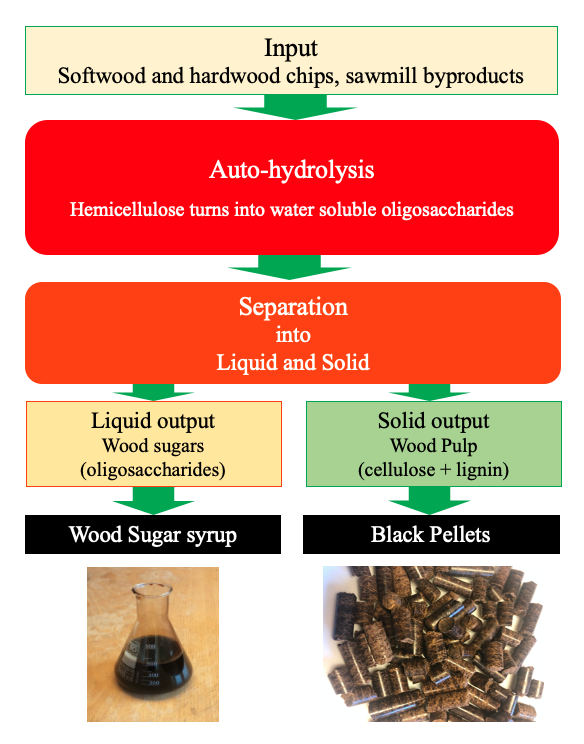Our Main Process
Both hardwood and softwood can be used as raw materials. Logs have to be debarked and chipped. The required wood quality is pulpwood or lower, energy wood can in general be used. Sawmill byproducts as sawdust and cellulose chips are also suitable. Contaminations like metal, plastics, stones, sand, should be avoided.
Autohydrolysis means that only water (steam) is used in the process, no chemicals are added.
Hemicellulose in the wood is turned into water soluble oligosaccharides by the hydrolysis. The composition of the saccharides vary with the species. From hardwood we get mainly pentosans (C-5 sugars). From softwood we get mainly hexosans (C6-sugars)

After the hydrolysis the processed wood is separated into a solid and a liquid part. The liquid part is a sugar solution, and the solid part is wood pulp mainly consisting of cellulose and lignin.
How much of the ingoing dry matter will be in the sugar solution depends on the species. There are variations within each species. As a rule of thumb, 20-25% of the dry matter in the wood will be extracted as wood sugar.
The liquid is then concentrated to a syrup.
The wood pulp has a moisture content of about 35% after separation, while natural moisture is typically above 50%. This means a low energy consumption in the drying before pelletizing.

